How to Use Basic Excel
Prepare
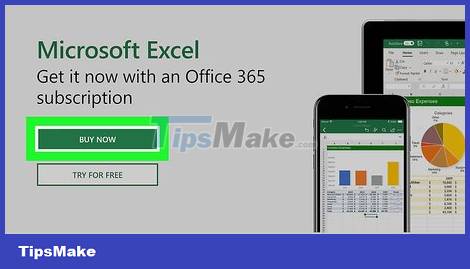
Install Microsoft Office if you don't have one already. Microsoft Excel is not distributed as a standalone program, but as part of the Microsoft Office software package.
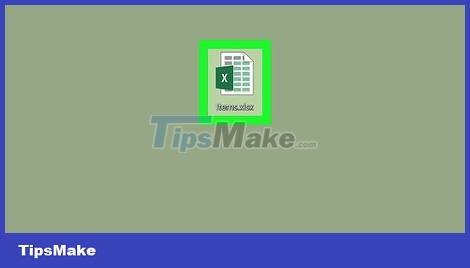
Open any Excel document by double-clicking it. This document will open in an Excel window.
Skip this step if you want to create and open a new Excel document.
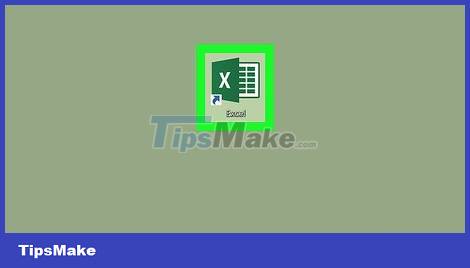
Open Excel. Click or double-click the white "X" shaped Excel application icon on a dark blue background.

Select a template if needed. If you want to use an Excel template (such as a spending plan template), scroll down until you find the template you want to use and click it once to open it in the workbook.
If you just want to open a blank Excel document, click the Blank option at the top left of the page and skip to the next step.

Click the Create button to the right of the template's name.

Wait for the Excel workbook to open. This process will take a few seconds. After the blank sheet / Excel form appears, you can proceed to enter data into the sheet.
Insert information
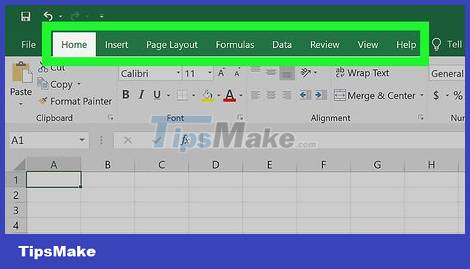
Get familiar with the ribbon tabs in Excel. On the green "ribbon" at the top of the Excel window are numerous tabs. It's access to Excel's various tools. The important tags are:
Home — Contains options related to text formatting, changing cell background color, and the like.
Insert — Contains options for tables, charts, graphs, and equations.
Page Layout — Contains options related to alignment, changing page orientation, and choosing a theme.
Formulas — Includes a function menu and numerous formula options.
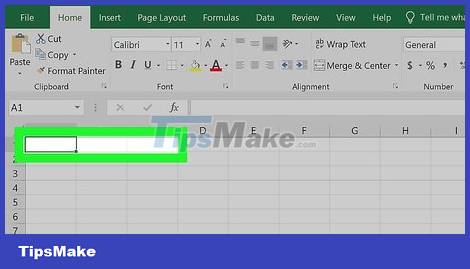
Consider using the top boxes as headings. When adding data to a blank spreadsheet, you can use the first cell (such as A1, B1, C1,.) as the column heading. They are very useful in creating tables that require labels.
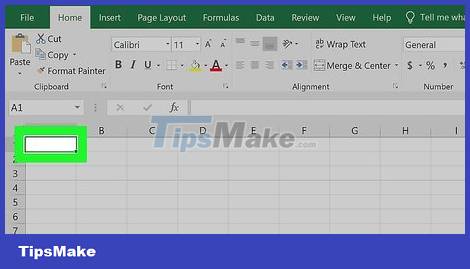
Select cell. Click in the cell where you want to enter data.
For example, in the case of using a spending plan template, you can click on the first empty box to select that box.
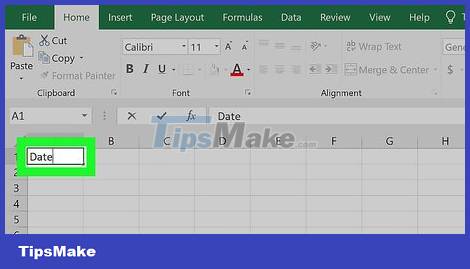
Enter text. Type the content you want to add in the cell.
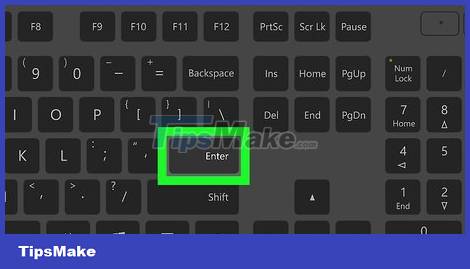
Press ↵ Enter to add content to the selected cell and go to the next available cell.
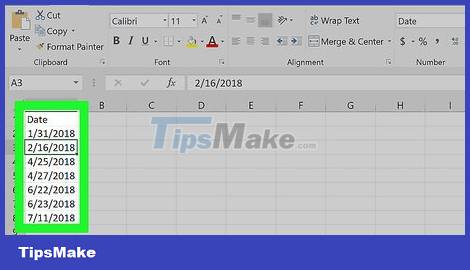
Edit your data. To go back and edit the data, click on the cell you want to edit and then make any adjustments you like in the text box above the top line of the spreadsheet.
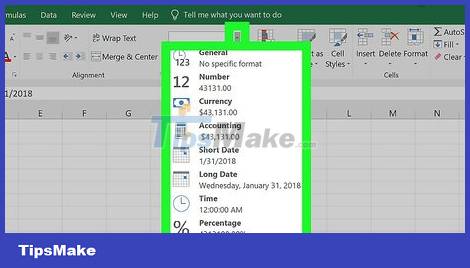
Format text if needed. If you want to change the formatting of the contents of a certain cell (such as changing from currency to date format), click the Home tab, go to the drop-down box at the top of the "Number" section. ) and then select the type of format you want to use.
You can also use conditional formatting to change the formatting of cells based on certain factors (for example, automatically turning red when a value in a cell is below a certain threshold).
Use the formula

Select the cell for your formula. Click in the cell where you want to create the formula.
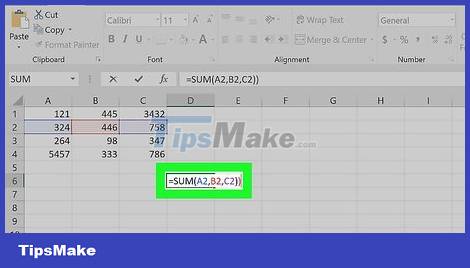
Do simple math. You can add, subtract, multiply, and divide cell values according to the following formulas:
Add — Type =SUM(cells+cells) (for example, =SUM(A3+B3)) to add two cells together, or type =SUM(cells, cells, cells) (for example, =SUM(A2, B2,C2)) to add a range of cells together.
Subtract — Type =SUM(cell-cell) (for example, =SUM(A3-B3)) to subtract the value of one cell from the value of the other cell.
Divide — Type =SUM(cells/cells) (for example, =SUM(A6/C5)) to divide the value of one cell by the value of another cell.
Multiply — Type =SUM(cell*cell) (for example, =SUM(A2*A7)) to multiply two cell values together.
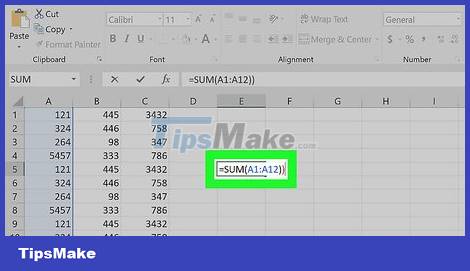
Add the numbers of the whole column. If you want to add all the numbers in a column (or part of a column), you can type =SUM(cell:cell) (for example, =SUM(A1:A12)) in the cell you want to display. display results.
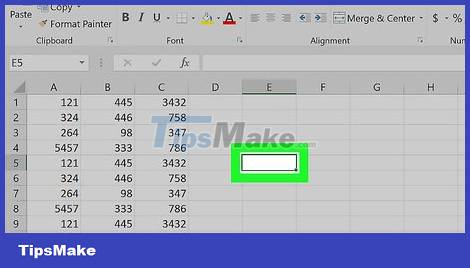
Select cells to work with advanced formulas. For more complex formulas, we will use the Insert Function tool. Let's start by clicking on the cell where you want to display the formula.

Click the Formulas tab at the top of the Excel window.
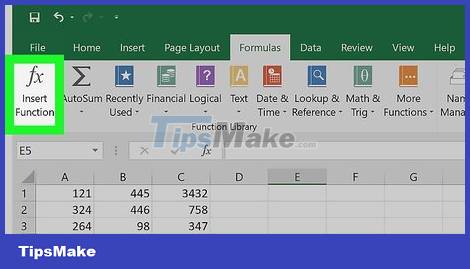
Click the Insert Function option on the far left of the Formulas toolbar. A new window will appear.
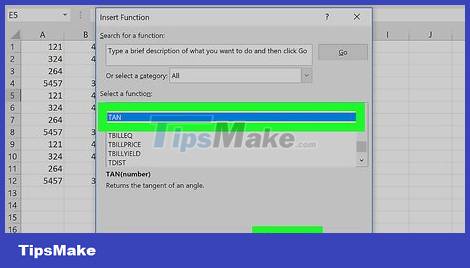
Select function. In the window that just opened, click the function you want to use and then click OK.
For example, to choose a formula that finds the tangent of an angle, you can scroll down and tap the TAN option.
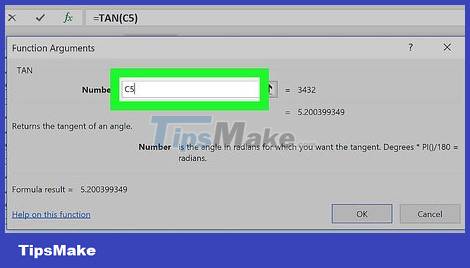
Fill in the function form. When prompted, enter the number (or select the cell) to which you want the formula to be applied.
For example, when choosing the TAN function, you will have to enter the magnitude of the angle for which you want to find the tangent.
Depending on the function selected, you may have to click according to some on-screen instructions.
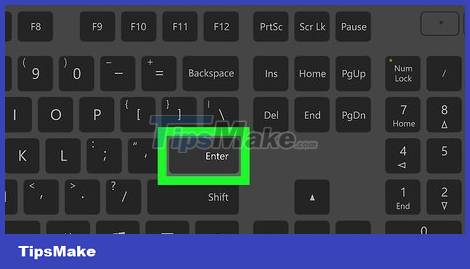
Press ↵ Enter to apply and display the function in the cell you selected.
Create a chart

Set up data for your chart. For example, to create a line chart or a column chart, you should create one column of data for the horizontal axis and one column of data for the vertical axis.
Usually the left column is used for the horizontal axis and its right column is used for the vertical axis.

Select data. Click and drag the mouse from the top left cell down to the bottom right cell of the data block.
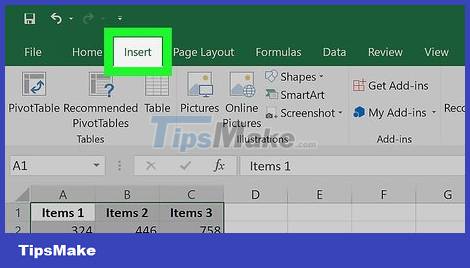
Go to the Insert tab at the top of the Excel window.
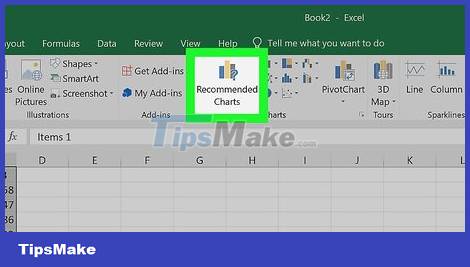
Click the Recommended Charts option in the "Charts" section of the Insert toolbar. A window with various chart patterns will appear.
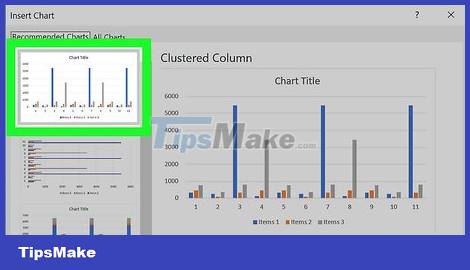
Select a chart template. Click on the chart template you want to use.
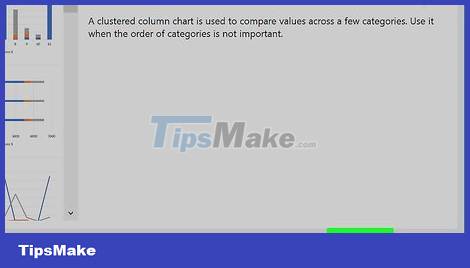
Click the OK button at the bottom of the window to create the chart.
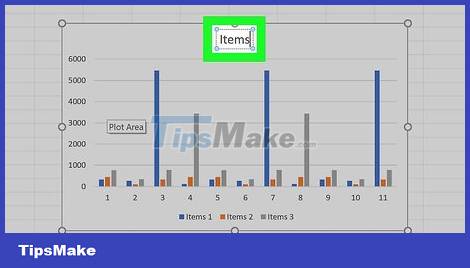
Edit chart title. Double-click the title at the top of the chart, delete and replace the current title with your own.
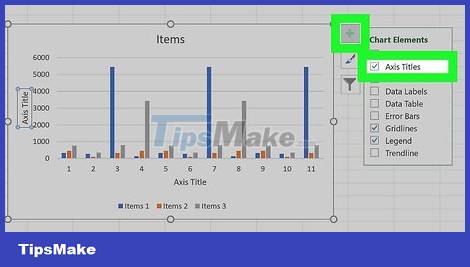
Change the axes title. If you want to add titles to the axes to the chart, you can go to the "Chart Elements" menu by clicking the green sign to the right of the selected chart and then making changes. .
Save Excel project

Click the File tab in the upper-left side of the Excel window (Windows) or desktop (Mac). A new menu will appear.
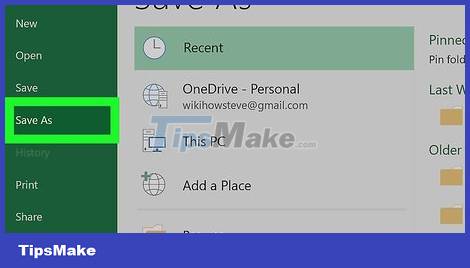
Click Save As . On Windows, this option is located on the left side of the page.
With a Mac, this option in the File drop-down menu.
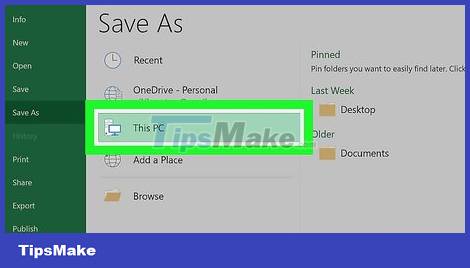
Double-click the This PC option located in the middle of the page.
With a Mac it would be On my Mac (On my Mac).
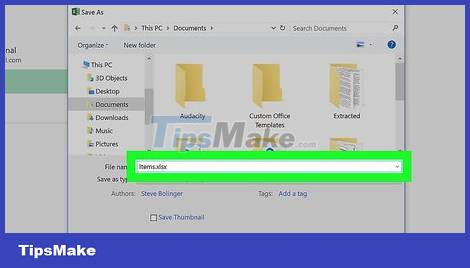
Enter your project name. Here, you can use whatever name you want to give your sheet and enter it in the "File name" box - on Windows or "Name" - on Mac - in the window. Save As window.
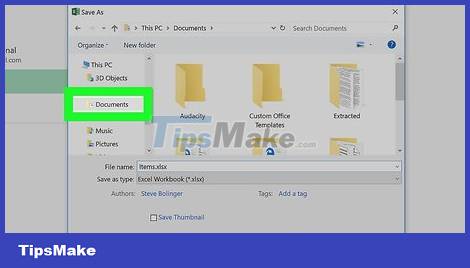
Select the save folder. Click the folder where you want to save the sheet.
On a Mac, you'll probably have to click the "Where" drop-down box first before you can select the file.
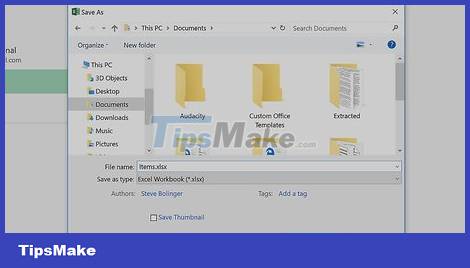
Click Save at the bottom of the window to save the worksheet to the selected folder under the given name.
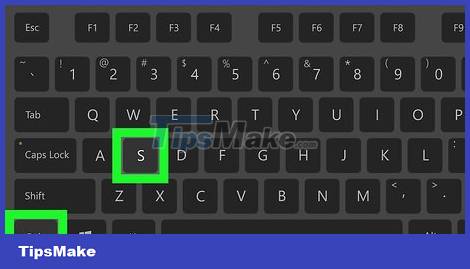
Save your edits later with the "Save" shortcut. If you intend to further edit the Excel document, you can later press Ctrl+S (Windows) or ⌘ Command+S (Mac) to save the changes without having to re-enter the Save As window.
You should read it
May be interested
- How to draw charts in Excel
 drawing diagrams on excel are basic and often done, when displaying data based on tables or comparing figures together.
drawing diagrams on excel are basic and often done, when displaying data based on tables or comparing figures together. - How to use subtraction in Excel
 subtraction in excel is a basic calculation, which is used a lot in excel calculation exercises.
subtraction in excel is a basic calculation, which is used a lot in excel calculation exercises. - Test Microsoft Excel P13
 in this article, network administrators will continue to learn about excel software through extremely interesting multiple-choice questions below. try to see how many questions you will make.
in this article, network administrators will continue to learn about excel software through extremely interesting multiple-choice questions below. try to see how many questions you will make. - Complete tutorial of Excel 2016 (Part 5): Basics of cells and ranges
 whenever you work with excel, you will need to enter information - or content - into the cells . cells are the basic building blocks of a spreadsheet. you will need to learn the basics of cells and cell contents to calculate, analyze, and organize data in excel.
whenever you work with excel, you will need to enter information - or content - into the cells . cells are the basic building blocks of a spreadsheet. you will need to learn the basics of cells and cell contents to calculate, analyze, and organize data in excel. - Microsoft Excel Test P11
 the excel 2010 interface changes very little compared to excel 2007 with the rearrangement of some on-screen components and the return of the file pane instead of the confusing office button. here, the network administrator will join readers to learn about new features in excel 2010 through the multiple choice questions below.
the excel 2010 interface changes very little compared to excel 2007 with the rearrangement of some on-screen components and the return of the file pane instead of the confusing office button. here, the network administrator will join readers to learn about new features in excel 2010 through the multiple choice questions below. - MS Excel - Lesson 5: Excel formulas and functions
 the formula in excel is a program that performs calculations on data tables. these formulas perform very precise operations such as adding, multiplying, or comparing values in worksheets.
the formula in excel is a program that performs calculations on data tables. these formulas perform very precise operations such as adding, multiplying, or comparing values in worksheets. - Basic Office skills in Excel
 basic office skills in excel. to quickly familiarize yourself with the office system, you need to understand the following issues: understand ribbon toolbar. - ribbon toolkit includes: home, insert, pagelayout, formulas, data, review, view, developer, add –ins. different from the exce version
basic office skills in excel. to quickly familiarize yourself with the office system, you need to understand the following issues: understand ribbon toolbar. - ribbon toolkit includes: home, insert, pagelayout, formulas, data, review, view, developer, add –ins. different from the exce version - Microsoft Excel P12 test
 the quiz on excel with many interesting questions will give you useful knowledge around this topic. the question set consists of 10 questions with 4 answers to choose from.
the quiz on excel with many interesting questions will give you useful knowledge around this topic. the question set consists of 10 questions with 4 answers to choose from. - Microsoft Excel Test P7
 proficiency in using excel and mastering excel tips will greatly help your promotion or study. in the article below, network administrator will help you add knowledge about this topic through multiple choice questions.
proficiency in using excel and mastering excel tips will greatly help your promotion or study. in the article below, network administrator will help you add knowledge about this topic through multiple choice questions. - Excel 2016 - Lesson 5: Basic concepts of cells and ranges
 whenever you work with excel, you will need to enter information - or content - into cells. let's learn the basics of cells and ranges in excel 2016 with tipsmake.com!
whenever you work with excel, you will need to enter information - or content - into cells. let's learn the basics of cells and ranges in excel 2016 with tipsmake.com!










 How to Merge Multiple Documents in Microsoft Word
How to Merge Multiple Documents in Microsoft Word How to Convert Word to PowerPoint
How to Convert Word to PowerPoint How to Rearrange Pages in Word
How to Rearrange Pages in Word How to Unprotect Excel Sheet
How to Unprotect Excel Sheet How to Read PDF Files on iPhone
How to Read PDF Files on iPhone How to Create a Chart in Excel
How to Create a Chart in Excel